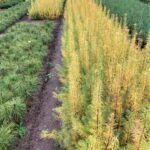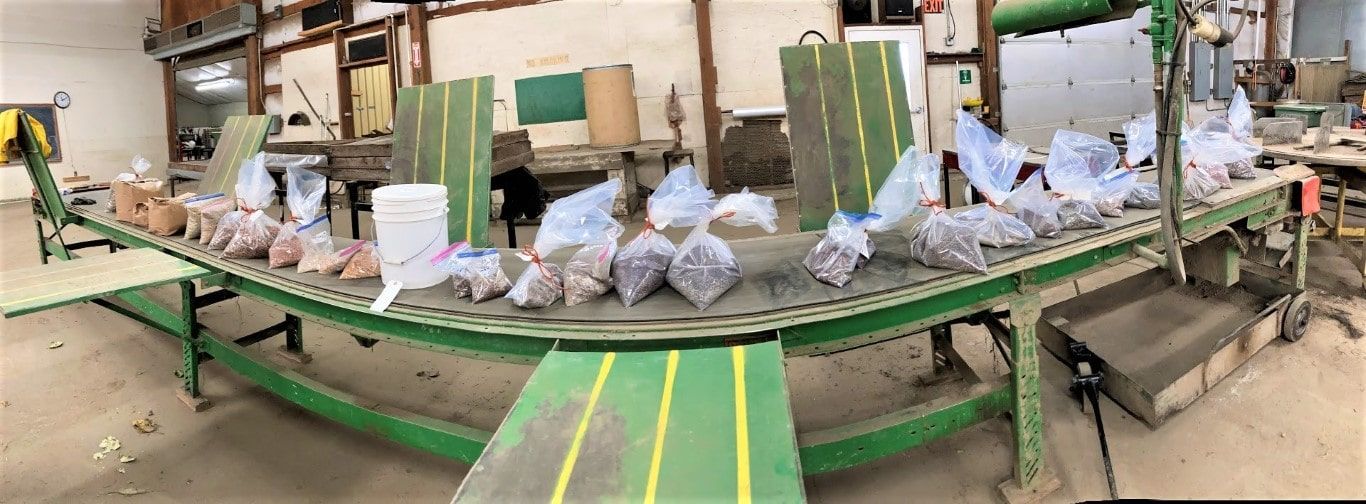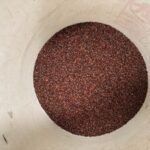The PMC Update for November 4, 2021

Sales
Sales remain at a record pace as detailed in last week’s update. One big sales milestone was accomplished this week. The total amount of sales for the upcoming season surpassed the budgeted sales revenue for the entire fiscal year. The budgeted amount for sales revenue is $1,209,000 and sales currently stand at $1,222,623 which is completely unprecedented. The current sales volume is comprised of 294 orders for 1,576,555 plants. There will be some cancellations and possible shortages that may reduce that number, but looking at the time of year it is and the amount of stock still available, those numbers will continue to increase.
Keeping up on this volume of sales is a big task for Jacquie and Lori and harvesting and shipping that many plants will be a huge challenge for Bill, John, and Maria. By the end of the season, the PMC’s capacity will be stretched beyond what was considered possible or necessary a few years ago.
PMC Word of the Week: Capacity

The Cambridge English Dictionary defines capacity as the ability to do something. It inherently implies a finite limit. The PMC certainly has its capacities and limits. It has a finite amount of arable ground to produce seedlings and live stakes, its cooler has a limited amount of room for storage, the processing line has only so many stations to work from, and there are 6 full-time staff and up to 20 seasonal employees during harvest to do the work. While all of these assets can be tweaked to increase capacity some it is the employees who are really asked to go above and beyond the call to make sure everything gets done as efficiently and thoroughly as possible, thereby increasing the PMC’s capacity.
Therefore, it is appropriate to give a big shout-out to those who accomplish so much to achieve important common goals. Here is who’s getting it done at the PMC:
- Jim Brown, Manager – That’s me. I have been here for over 24 years, growing plants and fighting weeds.
- Lori McLaughlin, Administrative Assistant / Human Resources – Lori has been here 21 years and, in that time, has strived to keep things organized, which is a tall challenge around here.
- Bill Mulder, Operations Supervisor – Bill has been with the PMC for 16 years. He keeps the farm going along with the equipment and facilities. He is a talented farmer and gifted mechanic.
- John Knox, Assistant Manager – John has been here for 3 years. He has been learning all of the facets of running a bare root nursery. He has taken on that challenge vigorously and learned a unique and varied skill set that he uses with determination to accomplish common goals.
- Jacquie Gauthier, Sales Manager – Jacquie was here from 2007 to 2012 and came back last June which gives her 7 years of experience that she uses to keep up on a record-setting sales year. Her knowledge of the plants grown here, how they are used, and positive attitude are invaluable in her position. We are pleased to have her back and look forward to continued growth in our sales capacity.
- Maria Rivera, Crew Leader – Maria has been here for 1 year. She came in last year at the start of harvest and hit the ground running. She quickly learned how to supervise a processing line during bare-root harvest and the 20 seasonal employees needed to make it work. She is fair and even with the crew which earns their respect. Keeping the processing line running smoothly is key in maintaining and increasing the number of plants the PMC can harvest during the dormant season.
- The Crew – The majority of the crew have been with us for multiple years. Jose, Denisa, Marta, Ruffino, Camillo, Florencio, Alejandra, Herminia, Reidy, Julio, Martha, Abel, Oscar, Bernabe, Marcelino, Francisco, Gustavo, and Jon come to work every day with a good work ethic, positive attitude, and valuable skills to help make the PMC more than a sum of its parts.
Thanks to everyone for helping make this worthwhile undertaking work!
Fall Seed Planting Almost Wrapped Up
The weather in Bow dried up enough to allow fall seed planting to be almost wrapped up, barely. Last Thursday over an inch of rain fell, then the sun came out over the weekend which dried the saturated ground enough to allow for seedbed prep on Monday morning. Along the way, most of the rest of the seed needed for finishing fall planting arrived and was also prepped Monday morning. Planting started Monday afternoon until, you guessed it, it started raining again. The rain stopped long enough to finish what we could on Tuesday. As the last seeds went through the seed drill, you guessed it, it started raining again!


There are a few small seed lots yet to arrive and they will be planted as conditions permit, at which point fall seed planting will be completed and the seed drills will be cleaned up and put away. Over the last 2 months, there have been 8.3 miles of 8-row seedbed planted, which required 560 pounds of seed (the Garry Oak acorns really bumps that number up), for a total of 8.8 million seeds that costs almost $40,000.
With a lot of hard work and luck, these efforts should produce around 1.75 million plants with a value of around $1.5 million. Add to that the spring-planted species and live stakes and you have yourselves a conservation nursery.
Live Stake Harvest Continues
It was reported last week that the live stake harvest was stopped because we were caught up on existing orders. Well, that changed this week and the crew was called back to fill some new orders that came in. They are finishing that up and until the next order comes in will have a few days off. They have cut and processed 75,500 live stakes so far this fall of various species and lengths.
Cost vs. Benefits
The sales update above details a current sales status of 1.575 million plants sold to date for a total of $1.225 million for an average cost of $0.78 per plant. What do these customers get for that? They get a native seedling or live stake that can: stabilize soils; provide cooling shade, shelter, and forage for wildlife; improve fish habitat; produce food, fiber, and fuel; convert carbon dioxide to oxygen while removing and capturing atmospheric carbon; all using locally sourced nutrients and moisture, powered by the sun. Plus, they can create more plants free of charge. If that is not a good cost vs. benefits ratio, I do not know what is.
I hope this helps. Please let me know if you have any questions.
Jim Brown, WACD PMC Nursery Manager
https://wacdpmc.org/about-us
